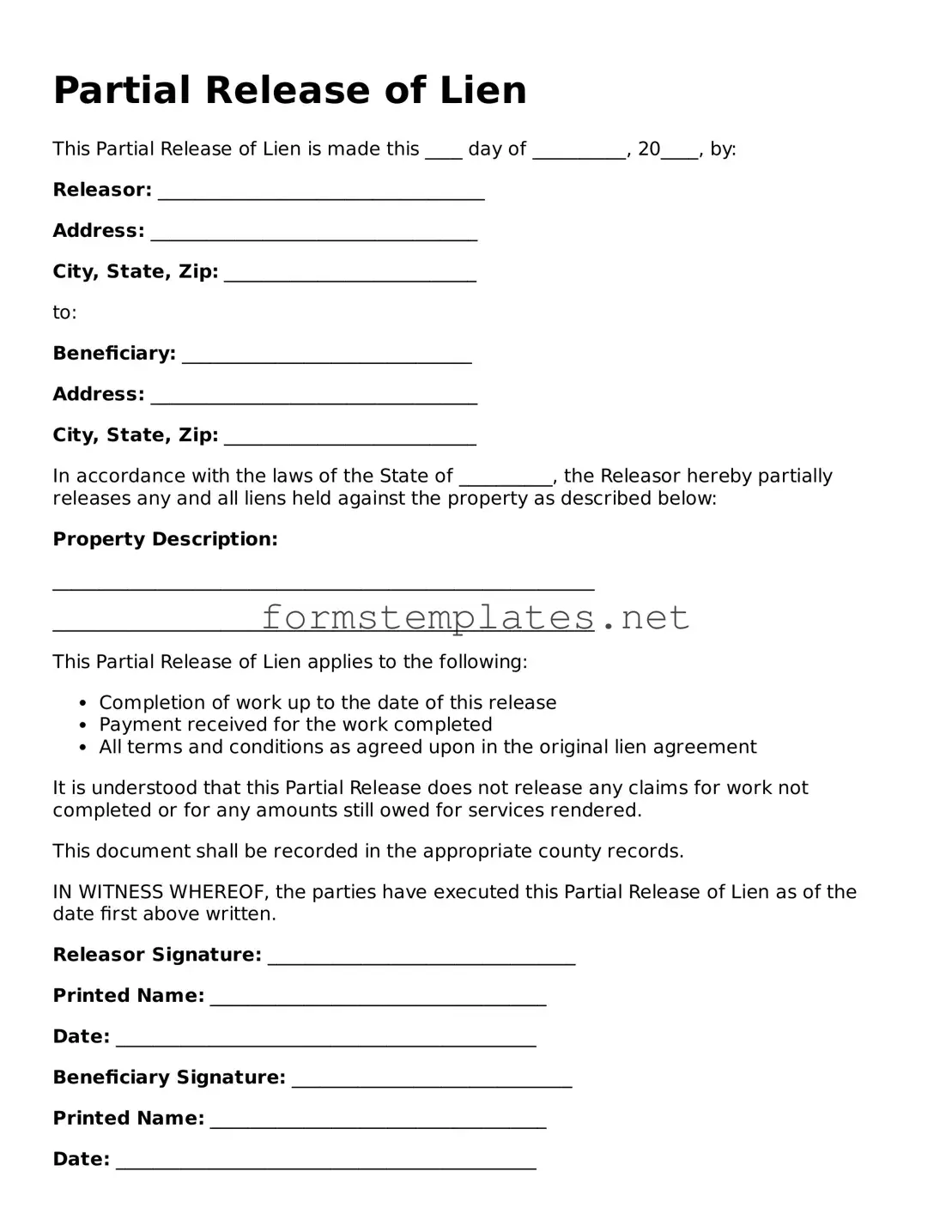Partial Release of Lien
This Partial Release of Lien is made this ____ day of __________, 20____, by:
Releasor: ___________________________________
Address: ___________________________________
City, State, Zip: ___________________________
to:
Beneficiary: _______________________________
Address: ___________________________________
City, State, Zip: ___________________________
In accordance with the laws of the State of __________, the Releasor hereby partially releases any and all liens held against the property as described below:
Property Description:
__________________________________________________________
__________________________________________________________
This Partial Release of Lien applies to the following:
- Completion of work up to the date of this release
- Payment received for the work completed
- All terms and conditions as agreed upon in the original lien agreement
It is understood that this Partial Release does not release any claims for work not completed or for any amounts still owed for services rendered.
This document shall be recorded in the appropriate county records.
IN WITNESS WHEREOF, the parties have executed this Partial Release of Lien as of the date first above written.
Releasor Signature: _________________________________
Printed Name: ____________________________________
Date: _____________________________________________
Beneficiary Signature: ______________________________
Printed Name: ____________________________________
Date: _____________________________________________
